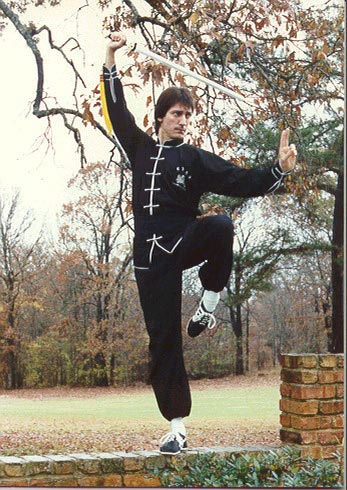
Master Dr. Silvio Azzolini
“All will come to him who keeps to the one, for there lays rest, happiness and peace.”
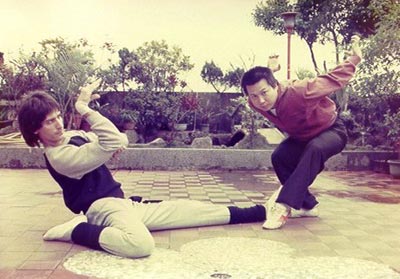
Master Azzolini began studying the martial arts in 1973 at the age of fifteen in Sao Paulo, Brazil. Master Azzolini later moved to the United States where he continued his martial arts training. In 1984 Master Azzolini moved to the Republic of China in search of a traditional Chinese Kung Fu Master. Upon arriving in China Master Azzolini obtained the names of the three top Kung Fu Masters on the island. He then set about seeking each one out. After meeting the first two teachers Master Azzolini was impressed with their high level of skill but soon after meeting the third teacher he knew this was the man who possessed the highest level of martial arts skill he had ever encountered. This man was the famous Grandmaster Chen Shuei Tsai, the Chief Master of the Taipei Chinese Kung Fu Association. Master Azzolini spent the next several months persistently requesting to be accepted as a disciple of Master Chen and finally on September 28, 1984 Master Chen recognized his great will and determination and accepted him as a disciple. Master Chen set only one condition upon his disciples training, that he would train six days a week for six hours a day, Master Azzolini quickly accepted the conditions and spent the next several years training endlessly in Traditional Northern & Southern Shaolin Kung Fu. Master Azzolini soon became the top student at the Taipei Chinese Kung Fu Association and was made the Captain of the Demonstration Team. While in the Republic of China Master Azzolini was the only non Chinese member of the Taipei Chinese Kung Fu Association Demonstration Team as well as Assistant Instructor of the Association and an Advisor to the World Kung Fu Championships. In 1985 Master Azzolini’s skills were noticed by Director Robert Tai and the Golden Sun Film Company. Master Azzolini was asked to play a leading role in several kung fu movie productions including “Mafia Vs. Ninja”, “Ninja Final Duel” and “Hong Men Heroes I & II.” Master Azzolini is a Medical Doctor and Director of the Taipei Chinese Kung Fu Association, U.S.A.
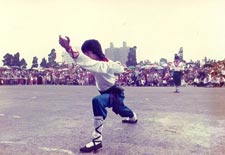
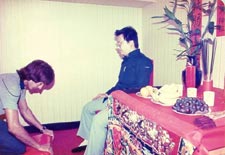
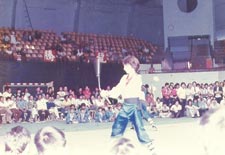
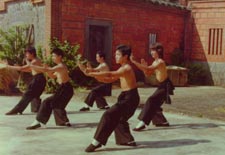
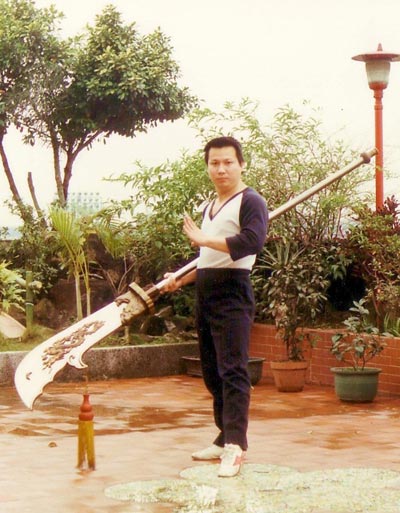
Grand Master Chen Shuei Tsai
“Stop leaving and you will arrive. Stop searching and you will see.”
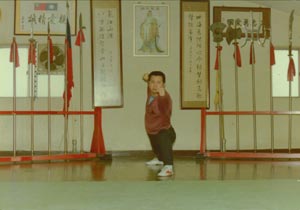 Master Chen was born in the Republic of China in 1957 and began his studies of Chinese Kung Fu in 1961, at the age of four. Over the following years he trained hard in Northern & Southern Shaolin Kung Fu and participated in many demonstrations, tournaments and other martial arts events all over the country. His kung fu skills began to be noticed by the martial arts community. Although his skills were excellent, Master Chen continued to seek out the best teacher to guide him in the mastery of Shaolin Kung Fu. In 1976 at the age of 19 he found the Master he had been searching for, a well known retired soldier, bodyguard and Living Treasure of Chinese Martial Arts was living nearby, his name was Fan Chi Sau. Master Chen sought to become a student of Master Fan Chi Sau, but unfortunately Master Fan informed young Master Chen that he did not take private students and invited Master Chen to join his large group class. Master Chen was discouraged because the group class was taught at a basic level due to the mixed skills of its students. Since Master Chen had such a strong desire to learn from Master Fan he decided to join the group class anyway. Soon Master Fan recognized the extraordinary level of Master Chen’s dedication & skill and made him one of his assistant instructors. After some time Master Fan decided to accept Master Chen as a private student and Master Chen pledged to follow the Shaolin moral code by teaching only those who follow the path of goodness, truth and loyalty.
Master Chen was born in the Republic of China in 1957 and began his studies of Chinese Kung Fu in 1961, at the age of four. Over the following years he trained hard in Northern & Southern Shaolin Kung Fu and participated in many demonstrations, tournaments and other martial arts events all over the country. His kung fu skills began to be noticed by the martial arts community. Although his skills were excellent, Master Chen continued to seek out the best teacher to guide him in the mastery of Shaolin Kung Fu. In 1976 at the age of 19 he found the Master he had been searching for, a well known retired soldier, bodyguard and Living Treasure of Chinese Martial Arts was living nearby, his name was Fan Chi Sau. Master Chen sought to become a student of Master Fan Chi Sau, but unfortunately Master Fan informed young Master Chen that he did not take private students and invited Master Chen to join his large group class. Master Chen was discouraged because the group class was taught at a basic level due to the mixed skills of its students. Since Master Chen had such a strong desire to learn from Master Fan he decided to join the group class anyway. Soon Master Fan recognized the extraordinary level of Master Chen’s dedication & skill and made him one of his assistant instructors. After some time Master Fan decided to accept Master Chen as a private student and Master Chen pledged to follow the Shaolin moral code by teaching only those who follow the path of goodness, truth and loyalty.
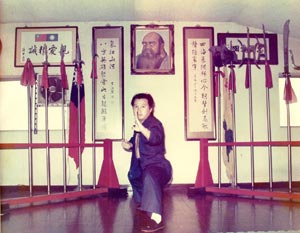 After years of exhausting and intensive training under the guidance of Grandmaster Fan Chi Sau Master Chen was able to reach the highest levels of Shaolin Mastery. Master Chen is well known in the Republic of China for his skills with the animal forms: Panther, Snake, Tiger, Crane and Dragon. Master Chen was the Chief Instructor of the Taipei Chinese Kung Fu Association and has been featured on National Television in order to demonstrate his martial arts skill for many different documentaries and T.V. specials on Chinese Kung Fu. He was also the only instructor in Taiwan still openly teaching the Eighteen Traditional Kung Fu weapons: Kwan Dao, Straight Sword, Broadsword, Staff, Spear, Fan, Butterfly Swords, Three-Sectional Staff, Nunchaku, Double Metal Rings, Tonfa, Sai, Iron Flute, Double Sticks, Tiger Fork, Double Halberd, Nine-Section Chain Whip and the Double Hook Swords. In 1990 Master Chen left Taipei and moved to the mountains of Taiwan in order to fully devote himself to the deeper training of Shaolin Kung Fu & Chi Kung. In 2003 a great tragedy struck with the untimely passing of Shaolin Grandmaster Chen Shuei Tsai. He will be sorely missed by all whose lives he touched through his devotion to the Shaolin way.
After years of exhausting and intensive training under the guidance of Grandmaster Fan Chi Sau Master Chen was able to reach the highest levels of Shaolin Mastery. Master Chen is well known in the Republic of China for his skills with the animal forms: Panther, Snake, Tiger, Crane and Dragon. Master Chen was the Chief Instructor of the Taipei Chinese Kung Fu Association and has been featured on National Television in order to demonstrate his martial arts skill for many different documentaries and T.V. specials on Chinese Kung Fu. He was also the only instructor in Taiwan still openly teaching the Eighteen Traditional Kung Fu weapons: Kwan Dao, Straight Sword, Broadsword, Staff, Spear, Fan, Butterfly Swords, Three-Sectional Staff, Nunchaku, Double Metal Rings, Tonfa, Sai, Iron Flute, Double Sticks, Tiger Fork, Double Halberd, Nine-Section Chain Whip and the Double Hook Swords. In 1990 Master Chen left Taipei and moved to the mountains of Taiwan in order to fully devote himself to the deeper training of Shaolin Kung Fu & Chi Kung. In 2003 a great tragedy struck with the untimely passing of Shaolin Grandmaster Chen Shuei Tsai. He will be sorely missed by all whose lives he touched through his devotion to the Shaolin way.
“Rejoice at your life for the time is more advanced than you would think.”
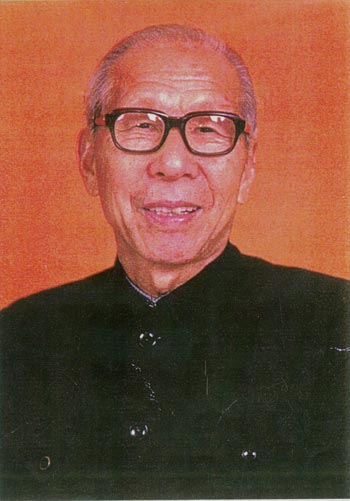
Grand Master Fan Chi Sau
“Along the way to knowledge, many things are accumulated.
Along the way to wisdom, many things are discarded.”
Grandmaster Fan Chi Sau was born in Shandong province, Republic of China on April 5, 1911 and began learning Shaolin Hung Chuan Kung Fu from his Grandfather at the age of four. His family operated a bodyguard / escort service and was well known for their martial arts skills. In 1930, at the age of 19, Grand Master Fan Chi Sau was accepted as a student at the Central Kuoshu Institute in Nanking. The Central Kuoshu Institute is known to be one of the two best martial arts schools of all time along with the Chin Woo Athletic Association in Hong Kong. At the Central Kuoshu Institute Master Fan Studied under the top Grandmasters of his time including Shaolin Master Wang Zi-Ping, WuDang Sword Master General Li Jing Lin, Internal Masters Sun Lu Tang & Chiang Jung Chiao and Shuai Chiao Master Ping Ching-I & General Ma Liang. During his practice he mastered Shaolin, Long Fist, Shuai Chiao, ChinNa, Pa-Chi, Cha Chuan, Tai Chi Chuan, Pakua, Hsing-Yi & Traditional Chinese Weapons.
In 1937 World War II began and the Japanese invaded China. At the age of 26 Grandmaster Fan Chi Sau joined the army of the Republic of China to help defend his country along with most of the other students and masters of the Central Kuoshu Institute. While serving in the army Master Fan’s skill and bravery were recognized earning him the rank of Major. Soon Master Fan was promoted again this time to serve in the elite “Iron Guard”. The Iron Guard was the group of bodyguards responsible for protecting General Chiang Kai-Shek. After World War II another battle gripped mainland China, this was the communist takeover which forced the nationalist army to retreat to Taiwan and establish the Republic of China. Master Fan left mainland China with the army and relocated to Taiwan around 1949.
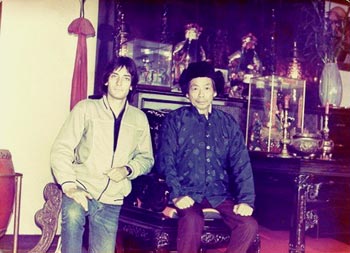 In Taiwan Master Fan became the Chief Iron Guard Teacher training the future men who would serve as bodyguards to President Chiang Kai-Shek. After retiring from military service Master Fan began teaching martial arts at the Taiwan Police College. During the early years of the Republic of China it was still common for arrogant martial artists to issue challenges to test their skills and prove their superior ability. While challenges were usually answered with a fierce response by the masters top students resulting in very few challenges to Master Fan due to the skill of his students one challenger did approach Master Fan directly. While Master Fan was teaching at the Police College another instructor approached and stated that he was the top instructor of the academy and Master Fan’s technique was inferior to his own, the instructor then attacked Master Fan with a kick which Master Fan immediately caught and applied a leg ChinNa technique breaking the attackers leg. Those who witnessed the short fight were amazed by the skill Master Fan displayed in easily defeating his attacker. This was the last challenge made to Master Fan.
In Taiwan Master Fan became the Chief Iron Guard Teacher training the future men who would serve as bodyguards to President Chiang Kai-Shek. After retiring from military service Master Fan began teaching martial arts at the Taiwan Police College. During the early years of the Republic of China it was still common for arrogant martial artists to issue challenges to test their skills and prove their superior ability. While challenges were usually answered with a fierce response by the masters top students resulting in very few challenges to Master Fan due to the skill of his students one challenger did approach Master Fan directly. While Master Fan was teaching at the Police College another instructor approached and stated that he was the top instructor of the academy and Master Fan’s technique was inferior to his own, the instructor then attacked Master Fan with a kick which Master Fan immediately caught and applied a leg ChinNa technique breaking the attackers leg. Those who witnessed the short fight were amazed by the skill Master Fan displayed in easily defeating his attacker. This was the last challenge made to Master Fan.
After retiring from the police college Master Fan decided to truly retire and cease his teaching of martial arts but a close friend requested that Master Fan resume teaching at the Chian Tian Youth Activity Center in Taipei. At first Master Fan declined to resume teaching but after several requests he yielded to his friend and began teaching martial arts classes at the center in 1976. While Master Fan taught martial arts at several different locations from the mid 1970’s until his death he accepted only a few private students including Master Chen Shuei Tsai, Lou Rei, and Master Lin. Out of these three private students Master Chen Shuei Tsai was the only accepted disciple of Grandmaster Fan Chi Sau.
In the Republic of China Master Fan was a delegate to the Taiwan National Kuoshu Association and was well known throughout the island as the top sword master in all of China and a Living Treasure of Chinese Martial Arts. In 1991 Master Fan returned to mainland China in order to visit family. While visiting his family Master Fan passed away on October 31, 1991.
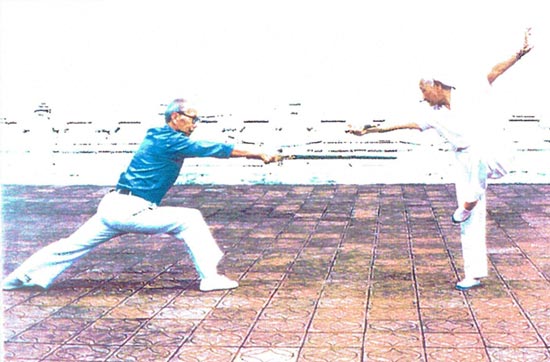
Grandmaster Fan Chi Sau & Master Fu Shu Yun
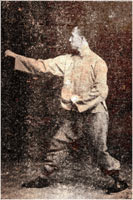 Chiang Jung Chiao
Chiang Jung Chiao
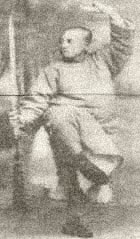 Chiang Jung Chiao was born in Hebei Province, China in 1890. During his youth he learned Northern Shaolin Mi Zong Chuan from his grandfather. He trained in his family style and earned a high level of proficiency in the staff and sword. He began his study of Tai Chi as a teenager. He later traveled to Tianjin to study with the top masters including the famous Wu Dang Swordsman General Li Ching Lin. Chiang became well known for his knowledge and skill in the martial arts community. In the 1920’s he founded the Martial arts Association of Honor & Virtue in Shanghai. During this time Master Chiang also wrote many books including, Tiger Tail Staff, Chi Men Spear, Tai Chi Long Form, Seven Star Sword and Shaolin Staff. Around 1928 he was invited to teach at the famous Nanking Central Kuoshu Institute and was appointed to the position of Director of Programs. He left Nanking when the Japanese attacked but continued teaching martial arts wherever he went. He later moved to Shanghai where he lived the remainder of his life and continued teaching even after losing his eyesight. Master Chiang died in 1971.
Chiang Jung Chiao was born in Hebei Province, China in 1890. During his youth he learned Northern Shaolin Mi Zong Chuan from his grandfather. He trained in his family style and earned a high level of proficiency in the staff and sword. He began his study of Tai Chi as a teenager. He later traveled to Tianjin to study with the top masters including the famous Wu Dang Swordsman General Li Ching Lin. Chiang became well known for his knowledge and skill in the martial arts community. In the 1920’s he founded the Martial arts Association of Honor & Virtue in Shanghai. During this time Master Chiang also wrote many books including, Tiger Tail Staff, Chi Men Spear, Tai Chi Long Form, Seven Star Sword and Shaolin Staff. Around 1928 he was invited to teach at the famous Nanking Central Kuoshu Institute and was appointed to the position of Director of Programs. He left Nanking when the Japanese attacked but continued teaching martial arts wherever he went. He later moved to Shanghai where he lived the remainder of his life and continued teaching even after losing his eyesight. Master Chiang died in 1971.
“He who follows the way has no fear, causes no harm and displays no strength. Since he has no fear, those who feed on fear are not attracted. Since he causes no harm, no harm can return to him. Since he displays no strength, no one can estimate his power.”
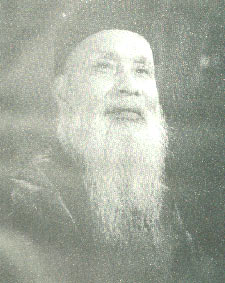
Wang Zi Ping
“The purpose of training is to tighten up the slack, toughen the body and polish the spirit.”
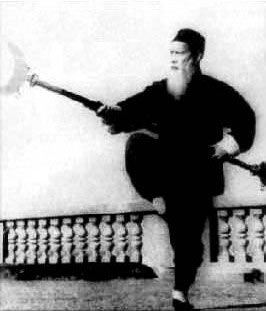 Wang Zi Ping was born in 1881 during the Ching Dynasty in Hebei Province to a martial arts family. He learned martial arts from Yang Hong Xiu and Sun Yan Biao. He was a master in Shaolin, Cha Chuan, Pa Chi Chuan (Eight Extremes Fist), and Ching Long Jian (Green Dragon Sword). He worked in his village for a short time but joined the army in order to teach kung fu to soldiers. He defeated many Western fighters who arrived in China during a time when the country was in turmoil due to foreign invasions. Once, he single-handedly defeated a squadron of foreign military police. During the many years of war and chaos Wang was forced to travel all over China and take on all kinds of jobs, but never stopped practicing kung fu. He started learning martial arts at the age of six, and never stopped practicing, even when he was more than eighty years old. Ching Long Jian (Dragon Spring Sword) was his own creation, developed after he analyzed many styles of swordsmanship, including Western fencing and Japanese kendo. In 1960, he accompanied Premier Zhou Enlai to Cambodia. At the time, he was the Master of the Chinese Kung Fu demonstration team and was already eighty years old.
Wang Zi Ping was born in 1881 during the Ching Dynasty in Hebei Province to a martial arts family. He learned martial arts from Yang Hong Xiu and Sun Yan Biao. He was a master in Shaolin, Cha Chuan, Pa Chi Chuan (Eight Extremes Fist), and Ching Long Jian (Green Dragon Sword). He worked in his village for a short time but joined the army in order to teach kung fu to soldiers. He defeated many Western fighters who arrived in China during a time when the country was in turmoil due to foreign invasions. Once, he single-handedly defeated a squadron of foreign military police. During the many years of war and chaos Wang was forced to travel all over China and take on all kinds of jobs, but never stopped practicing kung fu. He started learning martial arts at the age of six, and never stopped practicing, even when he was more than eighty years old. Ching Long Jian (Dragon Spring Sword) was his own creation, developed after he analyzed many styles of swordsmanship, including Western fencing and Japanese kendo. In 1960, he accompanied Premier Zhou Enlai to Cambodia. At the time, he was the Master of the Chinese Kung Fu demonstration team and was already eighty years old. 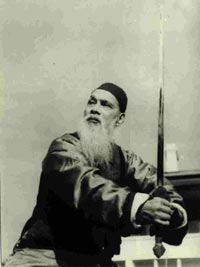 However, in a demonstration of his love for the martial arts, he again performed his Ching Long Jian, with the enthusiasm and skill of someone much younger. Wang had taken on minor roles in movies, usually in brief scenes showing some old martial arts master demonstrating a move or two. Although he was a well respected martial artist throughout the country, he never accepted money for his performances, claiming that his only goal was to promote martial arts. Wang was also a famous doctor, and produced several medical works during his later years. During his youth, Wang had repeatedly defeated Western boxers who challenged the Chinese to fights. Once in a demonstration of his strength he picked up a huge stone of enormous weight and was since then known has been known as the “King of Thousand Pounds”. Grandmaster Wang Zi Ping was the Vice Chairman of the Chinese Martial Arts Association and passed away in 1973.
However, in a demonstration of his love for the martial arts, he again performed his Ching Long Jian, with the enthusiasm and skill of someone much younger. Wang had taken on minor roles in movies, usually in brief scenes showing some old martial arts master demonstrating a move or two. Although he was a well respected martial artist throughout the country, he never accepted money for his performances, claiming that his only goal was to promote martial arts. Wang was also a famous doctor, and produced several medical works during his later years. During his youth, Wang had repeatedly defeated Western boxers who challenged the Chinese to fights. Once in a demonstration of his strength he picked up a huge stone of enormous weight and was since then known has been known as the “King of Thousand Pounds”. Grandmaster Wang Zi Ping was the Vice Chairman of the Chinese Martial Arts Association and passed away in 1973.
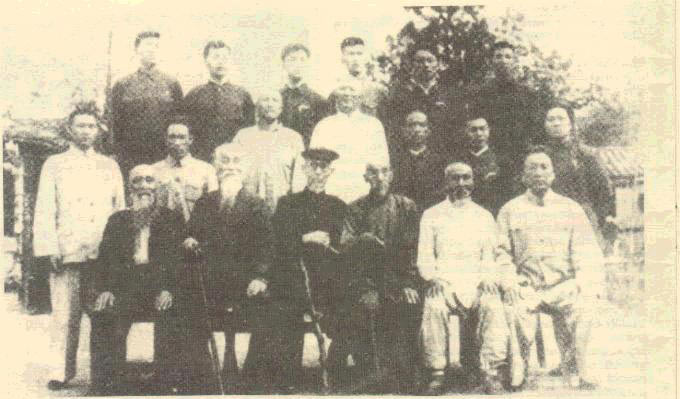
Nanjing Central Kuo Shu Institute
(Master Wang Zi Ping seated at far left)
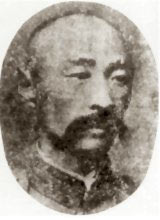
Li Jing Lin
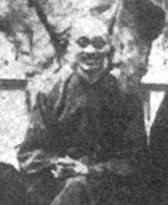 Li Jing Lin was born in Northern China in 1884. Li was a famous martial arts master and a general of the Chinese Army during the period of the Republic. Master Li reached the highest levels of skill in the Wu Dang school of martial arts and was exceptionally skilled in the use of the sword earning him the nickname “The Magician of the Sword”, Li studied the sword under the famous Taoist Master Sung Wei Yi (1855-1926), who learned from another famous Taoist master, Chung Yi I. Some of the most highly skilled swordsmen came from the Taoist monks of the of Wu Dang mountain. In 1928 Li Jing Lin was invited to teach at the Nanking Central Kuo Shu Institute and was appointed Deputy Director. In 1929 Li Jing Lin was appointed Director of the Shandong branch of the Kuo Shu Institute. Li Jing Lin learned his Yang Style Tai Chi Chuan from Yang Ban Hou (1837-1922) and was an expert in the Wu Dang sword.
Li Jing Lin was born in Northern China in 1884. Li was a famous martial arts master and a general of the Chinese Army during the period of the Republic. Master Li reached the highest levels of skill in the Wu Dang school of martial arts and was exceptionally skilled in the use of the sword earning him the nickname “The Magician of the Sword”, Li studied the sword under the famous Taoist Master Sung Wei Yi (1855-1926), who learned from another famous Taoist master, Chung Yi I. Some of the most highly skilled swordsmen came from the Taoist monks of the of Wu Dang mountain. In 1928 Li Jing Lin was invited to teach at the Nanking Central Kuo Shu Institute and was appointed Deputy Director. In 1929 Li Jing Lin was appointed Director of the Shandong branch of the Kuo Shu Institute. Li Jing Lin learned his Yang Style Tai Chi Chuan from Yang Ban Hou (1837-1922) and was an expert in the Wu Dang sword.
“A warriors mind must be permeated with enlightened wisdom and deep calm.”
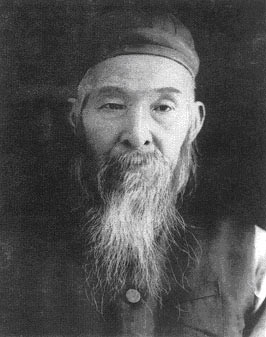
Sun Lu Tang
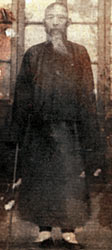
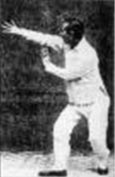 Sun Lu Tang was born in 1861 in Hebei Province. His Father was a poor farmer who died when Sun was still young. When Sun was a young boy he began learning Northern Hung Chuan from a Shaolin Master named Wu. In the early 1890’s Master Sun traveled to the mountains near Sichuan in order to study Chi Gung. Later Sun went to the Wu Dang Monastery in order to further his knowledge of the internal style of Kung Fu. Sun was highly skilled in Chinese martial arts and wrote five books on the subject. Sun believed that the martial arts were to be practiced for three reasons. First was to achieve a high level of physical & spiritual health in order to achieve a long life, second was to build fighting skill in order to defend oneself from any manner of attack and third was to gain the ability and courage to defend those who were unable to defend themselves. It has been noted that while Master Sun taught openly he was still a very traditional teacher in that he taught his students by how much dedication they displayed. If a student practiced hard physically and also studied the philosophy and moral lessons of the art, he would teach them all aspects of the martial arts without reserve, but if a student was not devoted to his practice he would be taught accordingly. Master Sun Founded the “Pu Yang Martial Arts Association,” in 1896. Sun also served in the Chinese Army after the fall of the last Ching Emperor. Sun was a lieutenant in the army in charge of teaching martial arts to soldiers from 1919-1924. Sun Lu Tang was a humble man who always followed the path of goodness, he was never proud or arrogant even though he was respected as a great master of his generation and was called “ First Hand Under the Sky.” Sun died at the age of 73 in the same room he had been born in. There is a famous story that says just before Sun died his students asked him what the secret to internal martial arts training was. The story states that Sun wrote a character in his hand, showed it to his students and then died. The character he had written was the character for “practice.”
Sun Lu Tang was born in 1861 in Hebei Province. His Father was a poor farmer who died when Sun was still young. When Sun was a young boy he began learning Northern Hung Chuan from a Shaolin Master named Wu. In the early 1890’s Master Sun traveled to the mountains near Sichuan in order to study Chi Gung. Later Sun went to the Wu Dang Monastery in order to further his knowledge of the internal style of Kung Fu. Sun was highly skilled in Chinese martial arts and wrote five books on the subject. Sun believed that the martial arts were to be practiced for three reasons. First was to achieve a high level of physical & spiritual health in order to achieve a long life, second was to build fighting skill in order to defend oneself from any manner of attack and third was to gain the ability and courage to defend those who were unable to defend themselves. It has been noted that while Master Sun taught openly he was still a very traditional teacher in that he taught his students by how much dedication they displayed. If a student practiced hard physically and also studied the philosophy and moral lessons of the art, he would teach them all aspects of the martial arts without reserve, but if a student was not devoted to his practice he would be taught accordingly. Master Sun Founded the “Pu Yang Martial Arts Association,” in 1896. Sun also served in the Chinese Army after the fall of the last Ching Emperor. Sun was a lieutenant in the army in charge of teaching martial arts to soldiers from 1919-1924. Sun Lu Tang was a humble man who always followed the path of goodness, he was never proud or arrogant even though he was respected as a great master of his generation and was called “ First Hand Under the Sky.” Sun died at the age of 73 in the same room he had been born in. There is a famous story that says just before Sun died his students asked him what the secret to internal martial arts training was. The story states that Sun wrote a character in his hand, showed it to his students and then died. The character he had written was the character for “practice.”
Shi Wu
Master Wu was born in Northern China in 1815 and was one of the top Shaolin Masters in Hebei Province. He was especially skilled in the Northern Hung style of Shaolin Kung Fu. Around 1867 Master Wu began teaching a very enthusiastic and skillful seven year old boy from the village of Bao Ding. He later adopted the boy when his father passed away. The boy grew to become one of the most famous and influential masters of all time, his name was Sun Lu Tang.
Fan Ye
Master Fan was born in Shandong, Northern China in 1855. He was a skilled Shaolin Master who used his martial arts skill to earn a living by protecting people and goods from bandits while they traveled throughout China. Many Kung fu masters operated these bodyguard / escort businesses because China was largely lawless with many criminals and bandits wandering the countryside. Master Fan began teaching his grandson their family style of Shaolin Kung Fu in 1915. His Grandson was Fan Chi Sau.
Fan Yu
Master Fan was born in Northern China at the beginning of the Ching Dynasty. Around 1760 the Ching Emperor feared that the Shaolin Monks would organize a rebel movement to overthrow him, so he ordered his troops to burn the Shaolin Temple and kill the monks. Despite the military attack on the temple many monks escaped and sought refuge throughout China. One of the fleeing monks, Shi Lai Ming came to Shandong Province where he met Fan Yu. Fan Yu helped Shi Lai Ming to hide from the Ching soldiers and in return Shi Lai Ming taught Fan Yu Shaolin Kung Fu. Shi Lai Ming passed on all of his Shaolin knowledge to Fan Yu who mastered the Shaolin style and became especially skilled in the Shaolin Hung Chuan style. Fan Yu later founded the “Fan Jia Protection Company” using his martial arts skills to protect people and goods from bandits and robbers while traveling throughout the countryside.
Shi Lai Ming
Shi Lai Ming was born in Honan Province, Northern China in 1740. He was sent to the Shaolin Temple as a young boy and began his training as a Buddhist Monk. Shi Lai Ming studied diligently and became a skilled master of Shaolin Kung Fu. Around 1760 the peaceful and serene lifestyle of the Shaolin Monks was shattered with a military attack on the temple by the Manchurian Army. The monks defended the temple and their lives vigorously but were overwhelmed by the massive army. The temple was burned and many monks were killed. However some of the monks were able to escape the massacre and sought refuge throughout China. Master Shi Lai Ming was fortunate enough to escape and he sought refuge in Shandong Province. Master Shi Lai Ming spent the remainder of his life teaching his Shaolin Kung Fu to the virtuous people who were still loyal to the previous Ming Emperor and sought to return the Ming Dynasty to power by overthrowing the New Manchurian Ching Dynasty. Shi Lai Ming died in Shandong in 1780.
Chung Yi I
Chung Yi I was born in 1810 and grew up near the Wu Dang Mountain. Chung became a Taoist Monk and spent his life cultivating the deepest Taoist arts. Chung Yi I was so exceptionally skilled in martial arts and the Wu Dang sword that it was said his skills were unmatched.
Sung Wei Yi
Sung Wei Yi was born in Lia Ning Province in 1855. Sung was taught Taoism from a young age and later went to Wu Dang Temple to become a Taoist Monk. At Wu Dang Temple Sung learned the Taoist Kung Fu & Chi Gung from the top Wu Dang Master Chung Yi I. Sung Wei Yi was known to posses the highest level of mastery using the narrow blade sword.
Sun Yan Biao
Sun Yan Biao was born in Gansu Province in 1884. He was a master of the Long Fist styles and was especially skilled with the Shaolin staff techniques. Maser Sun earned a living by traveling around the country demonstrating his kung fu skills with his disciples. Sun Yan Biao was an exceptional fighter having defeated many other masters all over China. Master Sun learned his Martial arts from Shao Yin Huan.
Shao Yin Huan
Shao Yin Huan was born in 1862 and lived in Gansu Province in the Mountains of the Dragon. Shao was a General during the Chinese warlord period toward the end of the Ching Dynasty. Shao was an experienced warrior having survived many bloody battles during this dangerous time in Chinese history. Shao was a master of the Long Fist Style.
Yang Hong Xiu
Yang Hong Xiu was born in Shandong Province in 1795 during the reign of Emperor Qian Long. Yang was known to be the top master of Shaolin Long Fist in Shandong during his lifetime. Yang was well known for his smooth, direct and powerful style. Yang Hong Xiu was the Master of Wang Zi Ping.
Hong Zhang Yuan
Hong Zhang Yuan was born around 1722. Hong was a soldier and was trained in Long Fist. Hong was especially skilled in the Cha Chuan Style.
Cha Shan Yi
Cha Shan Yi was born toward the end of the Ming Dynasty. Cha was a soldier and an expert in the Long Fist Styles of Hua Chuan and Cha Chuan. Cha Shan Yi had a large influence on the styles of martial arts practiced in the Shandong area.
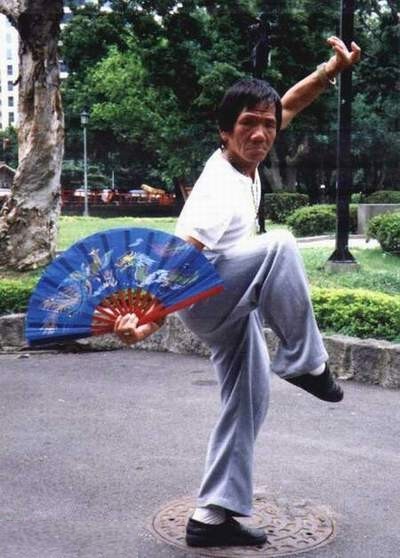
Chang Ke Chi
Chang Ke Chi is the leading master of the Southern Shaolin Five Animals Style in the Republic of China (Taiwan), he taught the southern Shaolin five animals style to Chen Shuei Tsai when Chen was a youth and heavily influenced Chen’s later training and teaching. The Five Animals Hung Ga was brought to Taiwan from Guangdong province around 1946 by Chang’s teacher Lin Jia Kun. Lin was a soldier in the Nationalist Army and came to Taiwan with the retreating army as the communists overtook mainland China. While in Taiwan Lin Jia Kun taught Chang Ke Chi who went on to become the predominant teacher of the Five Animals Hung Fist. Chang worked both as a teacher and in the martial arts film industry in Taiwan and throughout Asia beginning in the 1960’s.
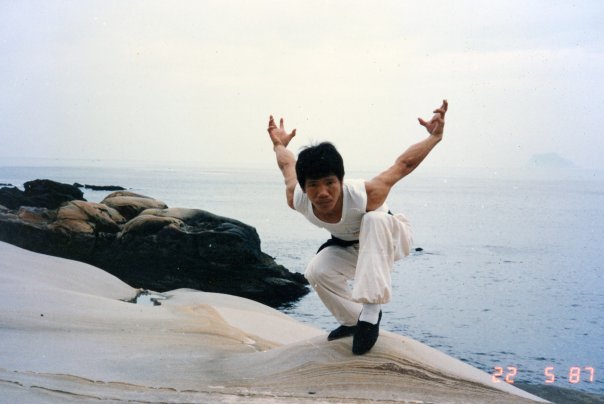
Due to the large number of practitioners and growth of the style in Taiwan Lin Jia Kun’s Five Animals style is also known as Taiwanese Hung Ga although it originated in Guangdong and Fujian provinces on the mainland during the Qing dynasty. Chang Ke Chi lives in Taichung, Taiwan and is the leader of the Shaolin Hung Boxing Association, ROC. Chang’s students include many of Taiwan’s top masters, coaches and teachers including: Chen Suei Tsai, Lin Chien Hong and Chen Ching Ho. Chang Ke Chi is especially known for his skill in the Drunken Fist, Monkey Boxing and the Snake style.
“A journey of a thousand miles begins with one step.”


